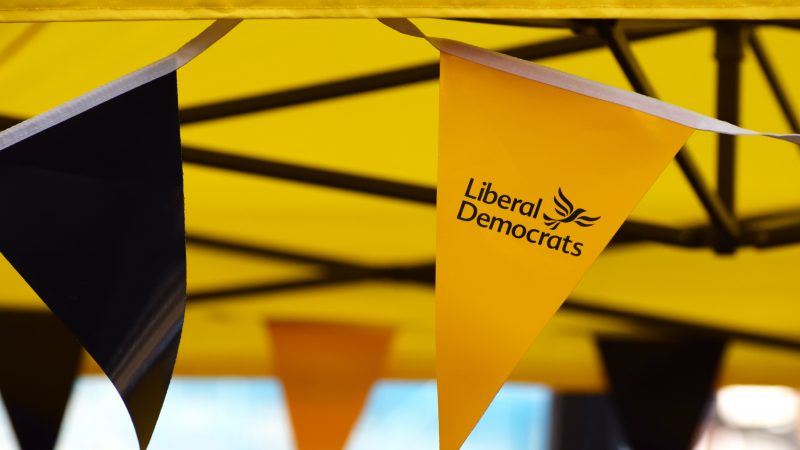
The Conservatives’ campaign woes have gone from bad to worse. The latest turn in the campaign can be very briefly summarised as one Conservative own goal and one goal scored by Reform.
The Prime Minister’s apparent early exit from D-Day commemorations has had a big impact on his personal ratings, with his approval score slumping to net -40 (60% disapprove, 20% approve). Then Nigel Farage’s return has ensured that there is someone ready to maximise the Conservatives’ pain and discomfort.
But the patterns we are seeing in the polls are bigger than that. It’s not a simple story of the Tories being down and Reform going up. All the trends we have come to expect from recent elections are being confounded.
For the last two elections at least, we have seen the votes of smaller parties squeezed over the course of the campaign in favour of the two larger parties. The opposite is happening in this time around.
More strikingly, both Labour and the Conservatives are dropping in the polls, not just the Tories. The two larger parties are collectively down seven points in the last fortnight. Voters are feeling comfortable going elsewhere.
Similarly, it’s not just Reform that is up. The Lib Dems are also up too and the Greens are holding onto a significant vote share.
What the polls tell us
As far as we can tell at this stage there are three shifts taking place under the surface of the polls:
- Some traditional Conservative voters who stayed with the party even up until recent weeks are now switching to Nigel Farage’s Reform UK.
- Some 2019 Conservative voters who were going to switch directly to Labour are now going in several different directions: some to Reform, some to the Lib Dems.
- Some formerly solid Labour voters are aligning with the Lib Dems and Greens, depending on their politics and where they live.
Where this will end up is the big question facing us over the next few weeks. There are many people on the right of centre who remain unhappy about the idea of a Labour government but are now convinced there will be a Labour win.
The Conservatives will be hoping they can persuade those voters to back the party at the last minute. Labour hopes they can prevent their vote from splintering any further, for fear that a significant majority could slip away from them at the final moment.
Small parties on the rise
The most striking figures from our latest poll are the declining vote share of the two largest parties and the increase in the vote share of the smaller parties.
Labour is now on 40% of the vote, the party’s joint lowest polling figure since Liz Truss was in office. They have dropped 5 points in the last fortnight.
The Conservatives are on only 23% of the vote, also their joint lowest polling figure since Truss was in office. They are down 2 points in the last fortnight and have lost ground from a very low base in each of the last three polls.
By comparison, over a third (37%) of all voters are now backing one of the smaller parties. In particular, Reform has hit a new polling high of 14% of the vote, and the Lib Dems are now on 12% of the vote. The Greens have held onto their substantial 7% of the vote.
State of the race
The Conservative campaign has gone from bad to worse. Week after week, half of voters have perceived the Conservatives as having a bad campaign. This has now shot up to 65% last week, and hits home just how aware the public is of the problems facing Rishi Sunak and his party in this election.
By comparison, Labour had the best week of the campaign so far, with 43% believing the party had a good week and only 19% believing they had a bad week.
READ MORE: Labour manifesto: ‘What it means for small business and the self-employed’
With increased media exposure, the smaller parties’ campaigns appear to be picking up, with all three of the smaller parties seeing a drop in the numbers who didn’t know how their week was. 28% now think the Lib Dems had a good week and 23% think the Greens had a good week.
Reform have had some of the biggest changes over the past fortnight, with their campaign continuing to have a lot more cut-through than it did before Nigel Farage returned. However, there is a feeling that the party’s week had gone badly (31%) rather than good (26%), unlike the week before.
This article was originally published on Opinium’s Substack and has been republished on LabourList with the author’s permission.
READ MORE: Sign up to our must-read daily briefing email on all things Labour
Read more of our 2024 general election coverage:
Labour wants a new generation of new towns. Can it win in Milton Keynes?
2024 manifesto versus 1997: ‘There are big similarities, but big differences’
‘How can I help Labour this election? The party insider’s guide to campaigning’
Revealed: The battlegrounds attracting most activists as 17,000 sign up
SHARE: If you have anything to share that we should be looking into or publishing about this story – or any other topic involving Labour or the election – contact us (strictly anonymously if you wish) at [email protected].
SUBSCRIBE: Sign up to LabourList’s morning email here for the best briefing on everything Labour, every weekday morning.
DONATE: If you value our work, please donate to become one of our supporters here and help sustain and expand our coverage.
PARTNER: If you or your organisation might be interested in partnering with us on sponsored events or content, email [email protected].




More from LabourList
What are Labour figures proud of this year – and what are their hopes for 2026?
Lord Hayward: Disappointing May elections could decide Keir Starmer’s fate
LabourList Christmas quiz 2025 round 5: factions and unions picture round